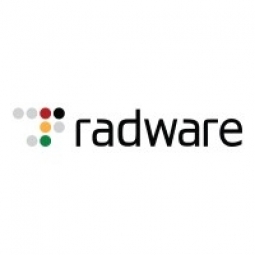Radware’s AppDirector Solution Enhances the Learning Experience for Complutense University’s Worldwide Community

Customer Company Size
Large Corporate
Region
- Europe
Country
- Spain
Product
- Radware Application Switch II (WSD Pro)
- CertainT 100 Accelerators (Xs2)
- OnDemand Switch 2 (AppDirector)
Tech Stack
- Microsoft Windows
- Linux
- UNIX
- VMS
Implementation Scale
- Enterprise-wide Deployment
Impact Metrics
- Digital Expertise
- Productivity Improvements
Technology Category
- Infrastructure as a Service (IaaS) - Cloud Computing
- Infrastructure as a Service (IaaS) - Hybrid Cloud
Applicable Industries
- Education
Applicable Functions
- Business Operation
Use Cases
- Campus Area Network
- Remote Collaboration
Services
- Cloud Planning, Design & Implementation Services
- System Integration
About The Customer
The Complutense University of Madrid is the biggest university in Spain, with nearly 90,000 students and approximately 10,000 professors and other administrative and support staff members. The university also maintains an information technology infrastructure designed to facilitate remote access to numerous services, from the moment a student registers for the first time. The IT infrastructure includes the Virtual Campus, in which 26 Complutense centers participate. The university’s networking environment includes two data centers and a total of 232 physical and virtual servers of multiple types (Microsoft Windows, Linux, UNIX and VMS). Services such as a university-wide intranet, an enrollment system, virtual campuses, email, directory services, ERP, proxy services, and multiple varied business applications are all critical to day to day operations and learning.
The Challenge
Complutense University of Madrid (UCM), Spain’s biggest university system, required a highly available and scalable networking solution to ensure critical services are provided to nearly 100,000 students and staff members in its centers in Spain and throughout the world. The university’s networking environment includes two data centers and a total of 232 physical and virtual servers of multiple types (Microsoft Windows, Linux, UNIX and VMS). Services such as a university-wide intranet, an enrollment system, virtual campuses, email, directory services, ERP, proxy services, and multiple varied business applications are all critical to day to day operations and learning. During peak usage times, there are more than 55,000 concurrent users connected to the network. In order to meet the needs of such an extensive and complex international network, Complutense University needed a reliable load balancing solution that would integrate the different critical services and allow for greater degrees of scalability and availability, enabling it to resolve various complex topological issues that several of the services had. UCM also needed a scalable solution that would offer the flexibility to add new servers as necessary.
The Solution
In 2005, UCM deployed two Radware Application Switch II (WSD Pro) solutions and two CertainT 100 Accelerators (Xs2). In 2009, it upgraded to two OnDemand Switch 2 (AppDirector) solutions, and the old equipment was then used to create the development and testing environments required by the different departments of the IT Services. Each data center runs its own Radware AppDirector load balancing solution. One AppDirector is active, while the other AppDirector is passive, acting as a back-up. Both AppDirector load balancers provide services to the UCM virtual networks, and these services are protected by firewalls placed between the system’s users and the AppDirector load balancer. Radware’s solution provides UCM with global server load balancing that improves the university’s load balancing infrastructure, allowing better delivery of the university’s strategic services and applications. The solution’s inherent scalability ensures that UCM can grow its infrastructure as needed.
Operational Impact

Case Study missing?
Start adding your own!
Register with your work email and create a new case study profile for your business.
Related Case Studies.

Case Study
Revolutionizing Medical Training in India: GSL Smart Lab and the LAP Mentor
The GSL SMART Lab, a collective effort of the GSL College of Medicine and the GSL College of Nursing and Health Science, was facing a challenge in providing superior training to healthcare professionals. As clinical medicine was becoming more focused on patient safety and quality of care, the need for medical simulation to bridge the educational gap between the classroom and the clinical environment was becoming increasingly apparent. Dr. Sandeep Ganni, the director of the GSL SMART Lab, envisioned a world-class surgical and medical training center where physicians and healthcare professionals could learn skills through simulation training. He was looking for different simulators for different specialties to provide both basic and advanced simulation training. For laparoscopic surgery, he was interested in a high fidelity simulator that could provide basic surgical and suturing skills training for international accreditation as well as specific hands-on training in complex laparoscopic procedures for practicing physicians in India.

Case Study
IoT platform Enables Safety Solutions for U.S. School Districts
Designed to alert drivers when schoolchildren are present, especially in low-visibility conditions, school-zone flasher signals are typically updated manually at each school. The switching is based on the school calendar and manually changed when an unexpected early dismissal occurs, as in the case of a weather-event altering the normal schedule. The process to reprogram the flashers requires a significant effort by school district personnel to implement due to the large number of warning flashers installed across an entire school district.

Case Study
Implementing Robotic Surgery Training Simulator for Enhanced Surgical Proficiency
Fundacio Puigvert, a leading European medical center specializing in Urology, Nephrology, and Andrology, faced a significant challenge in training its surgical residents. The institution recognized the need for a more standardized and comprehensive training curriculum, particularly in the area of robotic surgery. The challenge was underscored by two independent studies showing that less than 5% of residents in Italian and German residency programs could perform major or complex procedures by the end of their residency. The institution sought to establish a virtual reality simulation lab that would include endourological, laparoscopic, and robotic platforms. However, they needed a simulator that could replicate both the hardware and software of the robotic Da Vinci console used in the operating room, without being connected to the actual physical console. They also required a system that could provide both basic and advanced simulation training, and a metrics system to assess the proficiency of the trainees before they performed surgical procedures in the operating theater.

Case Study
Edinburgh Napier University streamlines long-distance learning with Cisco WebEX
• Geographically dispersed campus made in-person meetings costly and inconvenient.• Distance-learning programs in Malaysia, India, and China required dependable, user-friendly online tools to maximize interaction in collaborative workspaces.• Virtual learning environment required a separate sign-in process, resulting in a significant administrative burden for IT staff and limited adoption of collaboration technology.

Case Study
8x increased productivity with VKS
Before VKS, a teacher would spend a lot of time showing a group of 22 students how to build a set of stairs within a semester of 120 hours. Along with not leaving the teacher much time to provide one-on-one support for each student to properly learn carpentry, it also left a considerable amount of room for error. Key information would be misinterpreted or lost as the class was taught in the typical show-and-tell way.

Case Study
Scalable IoT Empowering GreenFlex's Sustainable Growth
GreenFlex, a company that supports sustainable development, decarbonization, and energy efficiency, faced several challenges in its quest to expand its business. The company needed to deploy a robust and sustainable IoT technology to support its growth. It was crucial for them to monitor and control devices at customer sites in a safe and reliable manner. They also needed to integrate devices across a range of communication protocols and gather and act on data to meet efficiency targets. GreenFlex had previously built IoT capabilities into its digital platform, GreenFlexIQ, to monitor and manage customer sites remotely. However, they soon realized that they needed a new platform to support their ambitions. They needed a platform that could scale to connect more devices for production management and make it easier for the operations team to manage devices in the field.






